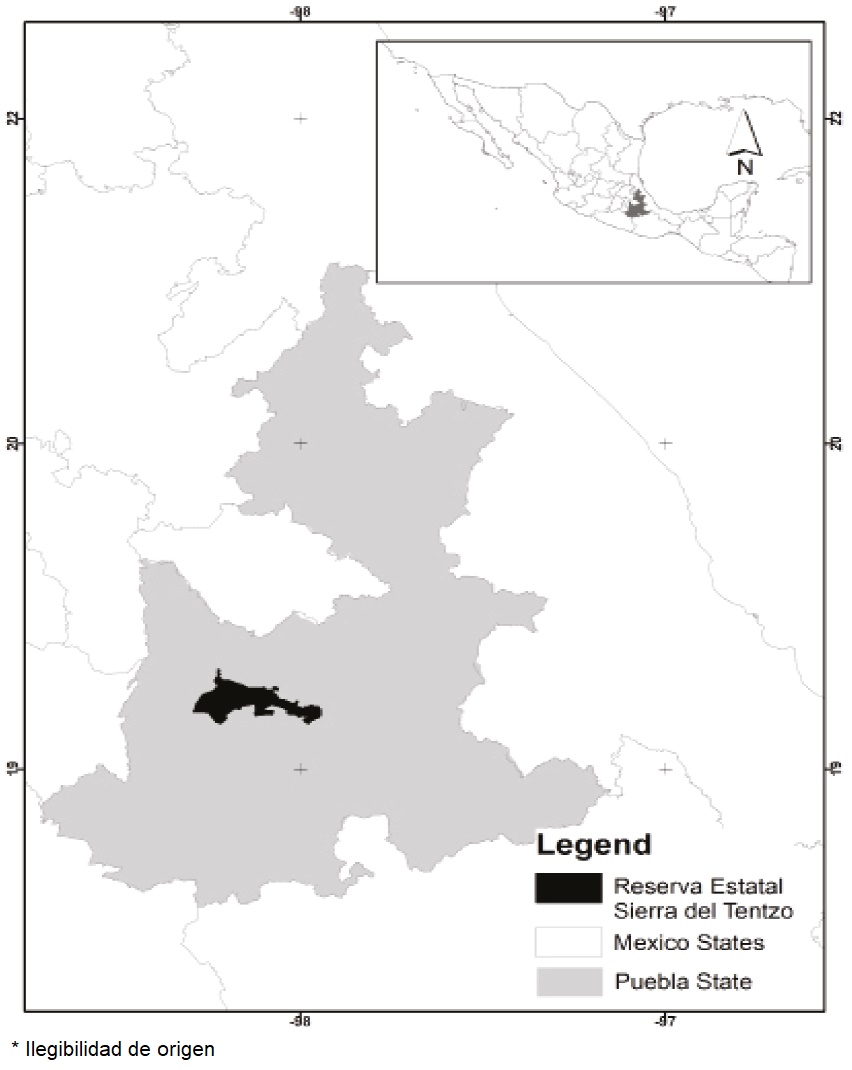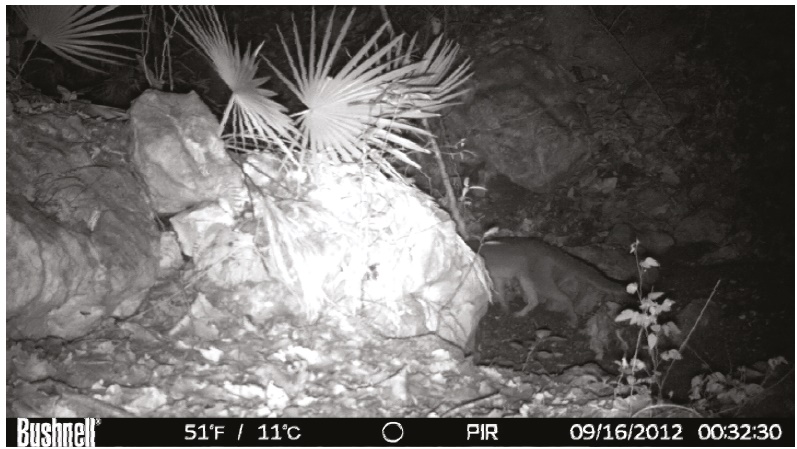Introduction
The puma (Puma concolor) is the felid with the broadest distribution in America, ranging from Canada to southern Argentina and Chile, where it inhabits almost all available habitats (Nowak 2005). This species plays a key role in the environment in arid and temperate areas where it a top predator; hence, its absence has a profound effect on ecological interactions (Allen et al. 2014). However, there is scarce information about the species, as well as on how habitat loss, prey depletion and hunting have affected puma populations along its range (Hernandez-Saintmartín et al. 2013). Furthermore, natural habitats have been reduced across its range, forcing the species to adapt to fragmented landscapes (Hernandez-Saintmartín et al. 2013); thus, small protected areas play a key role in the conservation of big felid species (Núñez 2010).
This is the case in Central Mexico, where protected areas are surrounded by a matrix of extensive agricultural land and urban areas. One such reserves is Sierra del Tentzo in Puebla, an area that was decreed as a state reserve in 2011 (Figure 1). It has a rugged terrain with elevations ranging from 2,000 to 2,350 masl; it has a mild dry climate with monthly mean temperatures between 16 °C and 21.5 °C (Instituto Nacional de Estadística, Geografía e Informática 2000; Morón et al. 2000). Sierra del Tentzo contains some of the last remnants of oak forest in the area and serves as a potential corridor between different protected areas (Periódico Oficial del Estado de Puebla 2011). Various large mammals thrive in the area, such as the white tailed deer (Odocoileus virginianus), collared peccary (Tayassu tajacu), and coyote (Canis latrans); however, despite of the presence of these potential prey, there had been no reports of large felids. In this note, we report the first record of puma (Puma concolor) captured during a camera-trap survey in the protected area of Sierra del Tentzo.
Methods
We conducted a camera-trapping survey to determine deer densities in the Sierra del Tentzo Nature Reserve. Two camera traps (Bushnell Trophy; Kansas, United States) were set for a total of 20 camera days during September 2012 spaced 1 km apart from each other, and at a height of 40 to 50 cm. along trails in remnants of an oak forest near the town of San Nicolas Huajuapan in the municipality of Huehuetlan el Grande (18° 46ʹ 57.18ʺ N, -98° 07ʹ 18.95ʺ W). To determine the importance of the new record at the regional level in terms of connectivity, we performed an Euclidian distance analysis using the available records in GBIF for the region (Puebla, Oaxaca, Veracruz, Estado de México and Hidalgo) and the extension available in ArcMap 10.1.
Results
A photograph of an adult puma was captured at 00:32 hours on September 16 near a dry river bed at an elevation of 1,680 m (Figure 2). In the same camera trap, we captured other species like ringtail (Bassariscus astutus), and grey fox (Urocyon cinereoargenteus); other cameras also recorded white tailed deer (Odocoileus virginianus) and coyote (Canis latrans). Distances to other capture sites were consistently reduced, from 34 km to 8 km, according to Euclidian distances.
Discussion and Conclusions
This record is noteworthy, as puma populations are expected to be distributed in a metapopulation structure in fragmented areas such as central Mexico (Miotto et al. 2012), and those limited by distance or habitat barriers would experience a limited gene flow (McRaer et al. 2005). We considered the existence of a metapopulation in the region, as the analysis showed that the distance between records previously obtained in Puebla (Figure 2; Ramírez-Bravo and Hernández-Santín 2016; Ramírez-Pulido et al. 2005; Velázquez et al. 2001) and in other states (Fuller et al. 2006; Soria-Díaz et al. 2010) is lower than the dispersal distances previously recorded for the species (Elbroch et al. 2009; Sweanor et al. 2000); however, further information is needed. The protected area closest to our study site inhabited by pumas is the Izta-Popo Nature Reserve, located 58 km away. Further sightings of the species were obtained between years 2008 and 2013 in the Mixteca Poblana in the southwest, and in the Tehuacán-Cuicatlán Biosphere reserve in the southeast, located at 73 km and 93 km from the study area, respectively (Ramírez-Bravo and Hernández-Santín 2016). Thus, our record suggests that Sierra del Tentzo could provide a suitable corridor for the dispersal of the species, as it is home to potential prey like white-nosed coati (Nasua narica), and white tailed deer (Odocoileus virginianus); additionally, this area has a low human density, and our puma record was captured 3 km away from the closest town (448 inhabitants). As a final recommendation, and as suggested for other fragmented areas with a urbanized matrix which hampers migration, it is imperative to maintain remnant forest fragments such as Sierra del Tentzo, which likely facilitate the dispersal of wild species (Miotto et al. 2012).











 nueva página del texto (beta)
nueva página del texto (beta)




